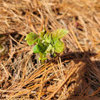Article on Colony Collapse Disorder
loribee2
13 years ago
Related Stories

DECORATING STYLES9 Ways to Bring Home a Little British Colonial Style
On a redecorating campaign? Try some tropical accents mixed with dark woods, portable furnishings and a touch of formality
Full Story
FARM YOUR YARDHello, Honey: Beekeeping Anywhere for Fun, Food and Good Deeds
We need pollinators, and they increasingly need us too. Here, why and how to be a bee friend
Full Story
TRADITIONAL HOMESHouzz Tour: Tudor-Inspired Outside, Open and Contemporary Inside
A designer shows respect for a home’s historic St. Paul neighborhood with a fresh take on Tudor style
Full Story
ARCHITECTUREWant to Live by the Water? What You Need to Know
Waterside homes can have amazing charm, but you'll have to weather design restrictions, codes and surveys
Full Story
GARDENING GUIDESSmall Carpenter Bees Are Looking for a Home in Your Plant Stems
Provide flowers and nesting sites in your garden for this beautiful, tiny, metallic blue wild bee — your plants will thank you
Full Story
DECORATING GUIDESFrom Queasy Colors to Killer Tables: Your Worst Decorating Mistakes
Houzzers spill the beans about buying blunders, painting problems and DIY disasters
Full Story
EARTH DAYHow to Design a Garden for Native Bees
Create a garden that not only looks beautiful but also nurtures native bees — and helps other wildlife in the process
Full Story
GARDENING GUIDESInvite Mining Bees to Your Garden by Planting Their Favorite Plants
Look for mining bees (Andrena) pollinating woodland wildflowers in U.S. gardens this spring
Full Story
INSIDE HOUZZInside Houzz: New Data Offer Insights on Landscaping Trends
Homeowners are looking to manage water and add more enjoyment to their landscapes, according to a new Houzz survey
Full Story
DECLUTTERINGYour Clutter-Clearing Plan for the New Year
Tackle these tasks month by month for a decluttering strategy that will really pay off
Full Story







jimster
sandhill_farms
Related Professionals
Londonderry Landscape Architects & Landscape Designers · Ferndale Landscape Architects & Landscape Designers · Richmond Heights Landscape Architects & Landscape Designers · Alamo Landscape Contractors · Choctaw Landscape Contractors · Clearlake Landscape Contractors · Concord Landscape Contractors · Fort Worth Landscape Contractors · Galveston Landscape Contractors · Lynn Landscape Contractors · Mendota Heights Landscape Contractors · Tewksbury Landscape Contractors · Pike Creek Valley Gardeners & Lawn Care · Dearborn Driveway Installation & Maintenance · San Jose Driveway Installation & Maintenancejimster
sandhill_farms
oregonwoodsmoke
gardendawgie
gardendawgie
loribee2Original Author
noinwi
Dan _Staley (5b Sunset 2B AHS 7)
gershon
gargwarb
Dan _Staley (5b Sunset 2B AHS 7)
franktank232
ericwi
marylandmojo
sandhill_farms
dicot
taz6122
veeta
calliope
jimster
veeta
Dan _Staley (5b Sunset 2B AHS 7)
plantinellen
bored4long
crownbee_dave
scarletdaisies
gargwarb